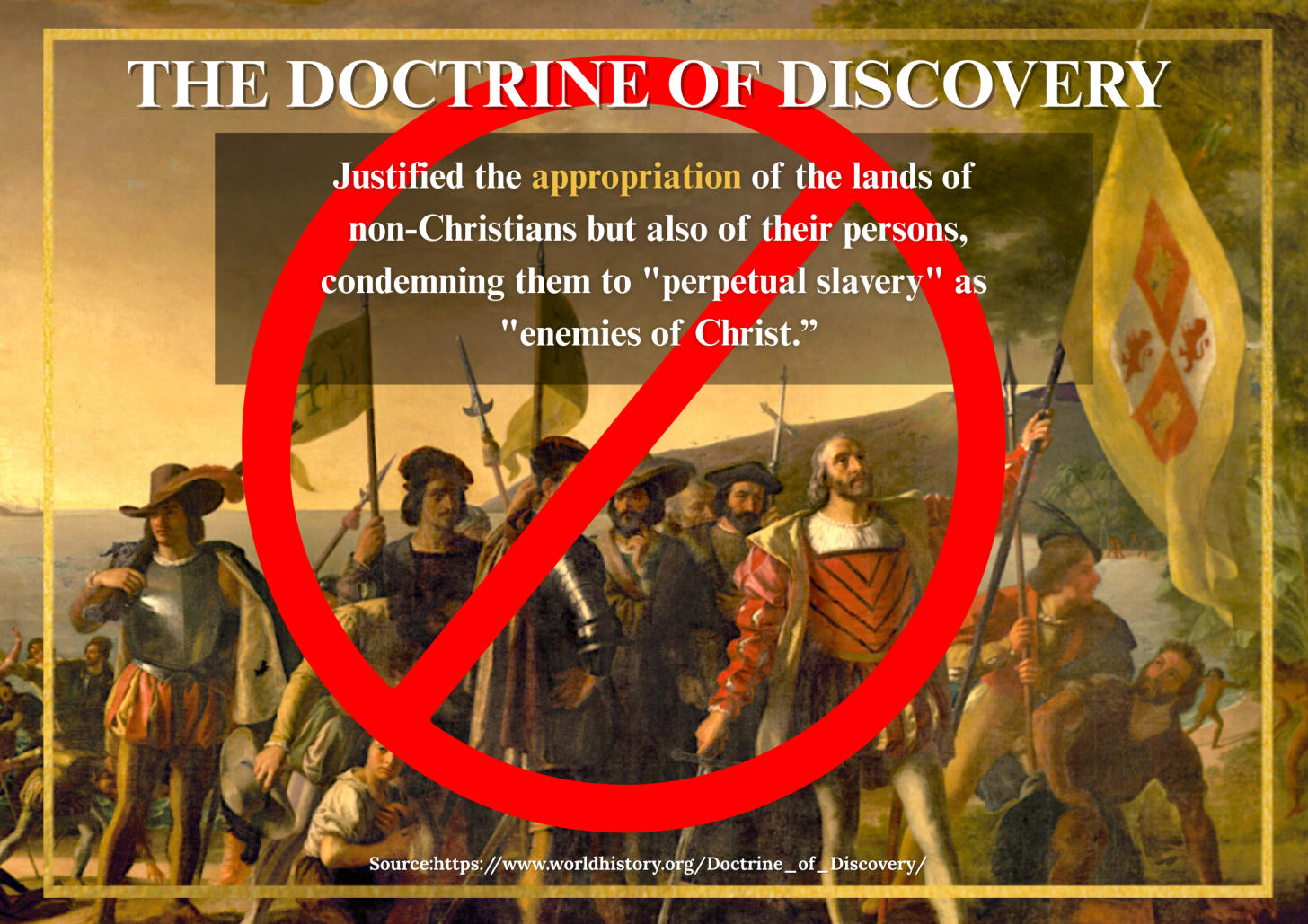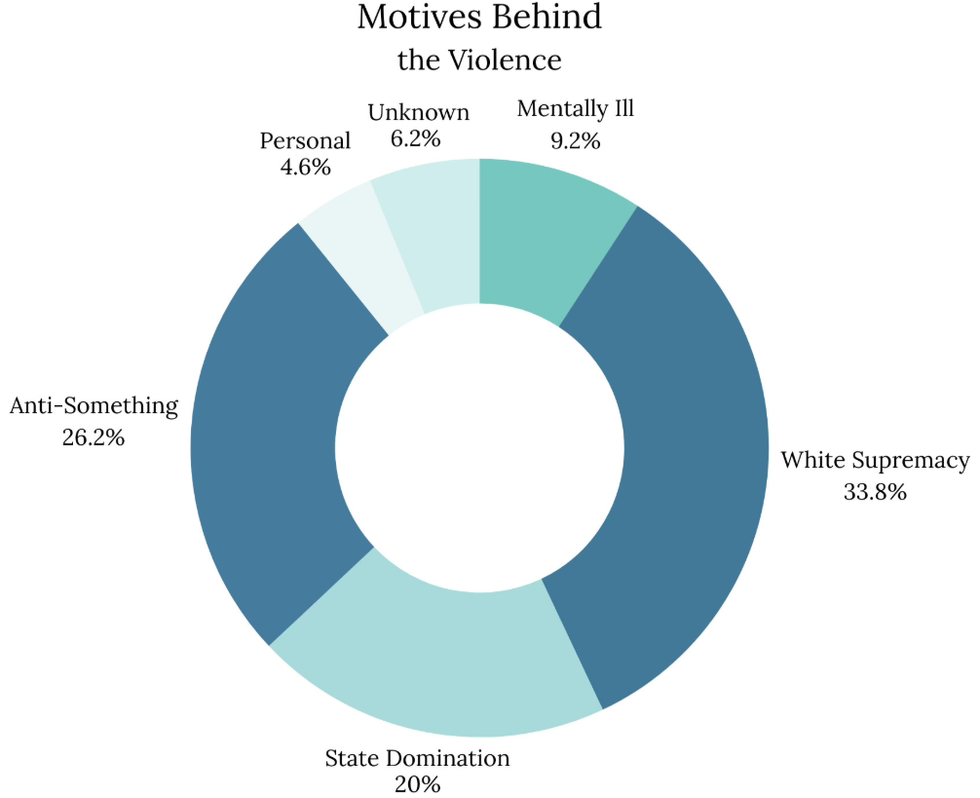In September 2025, activist Charlie Kirk was assassinated while speaking at a Utah campus event. His death was shocking — not only for its brutality, but because it showed that political violence is not just a relic of the past or a threat on the horizon. It is part of our national identity. Today’s surge in violence follows patterns we’ve seen before. Let’s take a look at that history.
When Pope Alexander VI issued the Doctrine of Discovery in 1493, he gave theological and legal cover for European conquest of lands already inhabited by indigenous people. These papal bulls declared non-Christian peoples “less than” and their lands open for seizure. This was more than a geopolitical maneuver — it embedded into the Western imagination a belief in the inherent supremacy of some over others.
 When the United States was founded nearly three centuries later, the Founders carried this worldview with them. In the Constitution, they enshrined compromises that upheld racial hierarchy:
When the United States was founded nearly three centuries later, the Founders carried this worldview with them. In the Constitution, they enshrined compromises that upheld racial hierarchy:
- The 3/5 Compromise gave enslavers disproportionate power by counting enslaved people as partial humans.
- The Fugitive Slave Clause treated Black people as property to be returned.
- Indigenous sovereignty was denied, laying the groundwork for forced removal and massacres.
These legal structures weren’t neutral. They authorized violence: slave patrols, lynchings, Native removals enforced by militias, and the steady expansion of “whiteness” as the standard of belonging.
That seed has borne bitter fruit for centuries. In the United States, political violence has always been part of enforcing this hierarchy.
- In 1837, abolitionist editor Elijah Lovejoy was murdered by a pro-slavery mob for daring to print against bondage.
- After emancipation, the Colfax Massacre (1873) and the Wilmington coup (1898) used terror to crush Black political power during and after Reconstruction.
- Native peoples were targeted in state-sanctioned violence, culminating in the Wounded Knee Massacre (1890).
- In the 20th century, racial violence surged whenever Black communities flourished. The Tulsa Race Massacre (1921) destroyed “Black Wall Street,” while the Red Summer of 1919 saw dozens of cities erupt in white mob violence.
- The Civil Rights Movement was met with assassinations and bombings: Medgar Evers (1963), the 16th Street Baptist Church bombing (1963), the murders of James Chaney, Andrew Goodman, and Michael Schwerner (1964), and of course, Dr. Martin Luther King Jr. (1968).
- White supremacist violence continued into our own time: the Greensboro Massacre (1979), the murder of Denver talk show host Alan Berg (1984), and mass shootings in Charleston (2015), Pittsburgh (2018), El Paso (2019), Buffalo (2022), and Allen, Texas (2023).
Across four centuries, violence has been used to enforce the same hierarchy: the supremacy of some over others.
We often think of white supremacy as something “out there,” belonging only to extremists. But if we are honest, we must ask: Where does it live inside us? In our unspoken fears, in the reflex to protect what is “ours,” in the subtle hierarchies we accept as normal. To live in peace, we must do the hard work of rooting it out of our own hearts and minds.
What we all yearn for is simple: a dignified life. A way to live securely, peacefully, and in community with one another. That dignity cannot be built on the subjugation of others — it can only grow in soil where all belong.
Steps Forward
My heart yearns for a peaceful world where our society is based in convenient, life-affirming systems. Our current society has deep roots in a hierarchy of human value and we have yet to break free. Our liberation depends upon us doing so. Here are things everyone can do:
- Tell the truth about our history. Remember the massacres, lynchings, and assassinations not as isolated tragedies but as a continuous thread.
- Examine our own complicity. Where do supremacy-based assumptions show up in our daily lives, in how we see neighbors, or strangers?
- Practice dignity. Uphold it in how we speak, how we act, how we shape institutions.
- Create new norms. From local communities to national politics, insist on policies and practices that make space for everyone to thrive.
The arc of violence will not bend toward peace on its own. It requires all of us, together, to name the roots, pull them up, and choose a different inheritance.
The Roots of America’s Violence was first published on Debilyn Molineaux's substack platform and was republished with permission.
Debilyn Molineaux is a storyteller, collaborator & connector. For 20 years, she led cross-partisan organizations. She currently holds several roles, including catalyst for JEDIFutures.org and podcast host of Terrified Nation. She also works with the Center for Collaborative Democracy, which is home to the Grand Bargain Project as a way to unify Americans by getting unstuck on six big issues, all at the same time. She previously co-founded BridgeAlliance, Living Room Conversations, and the National Week of Conversation. You can learn more about her work on LinkedIn.




















